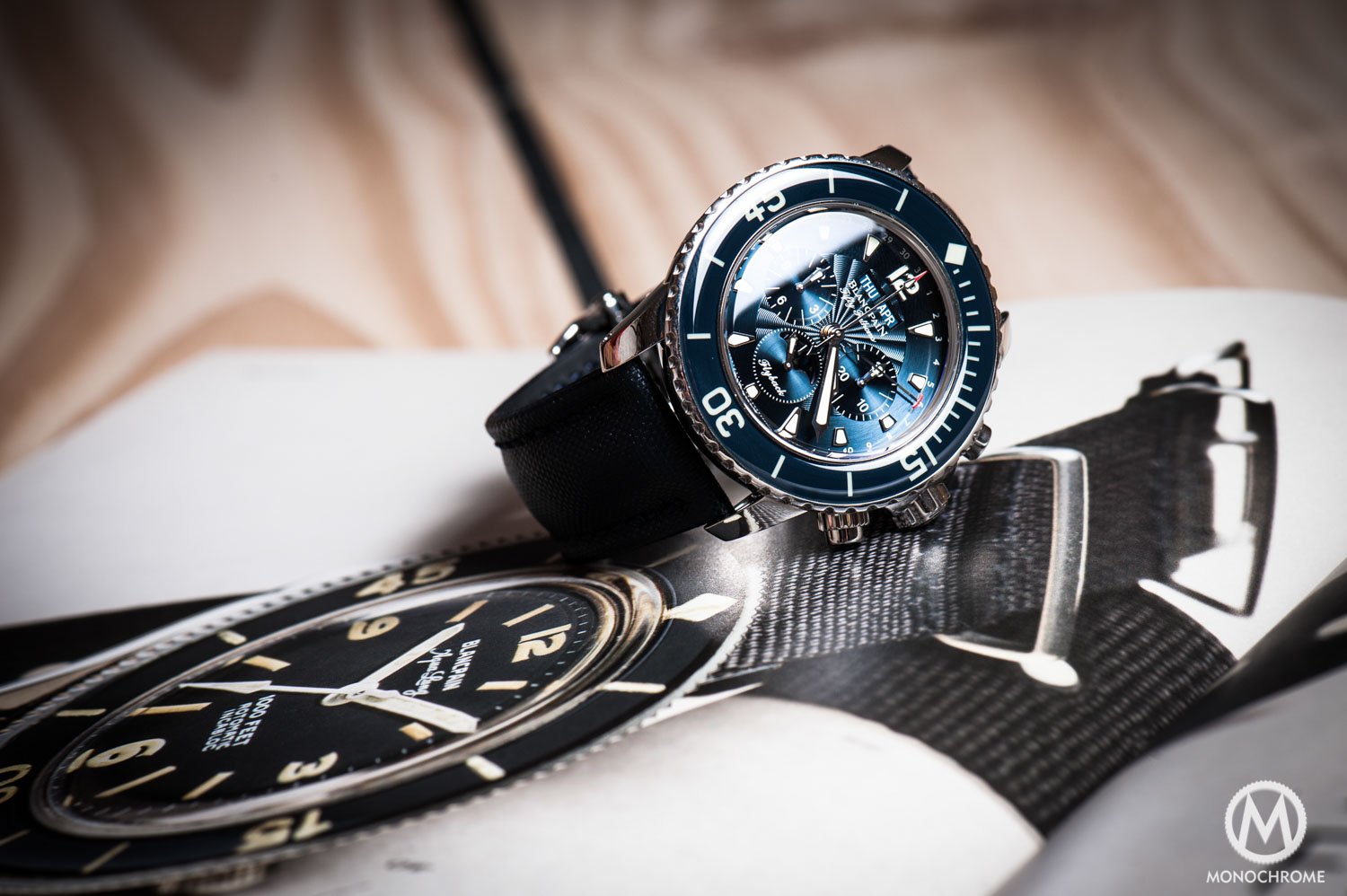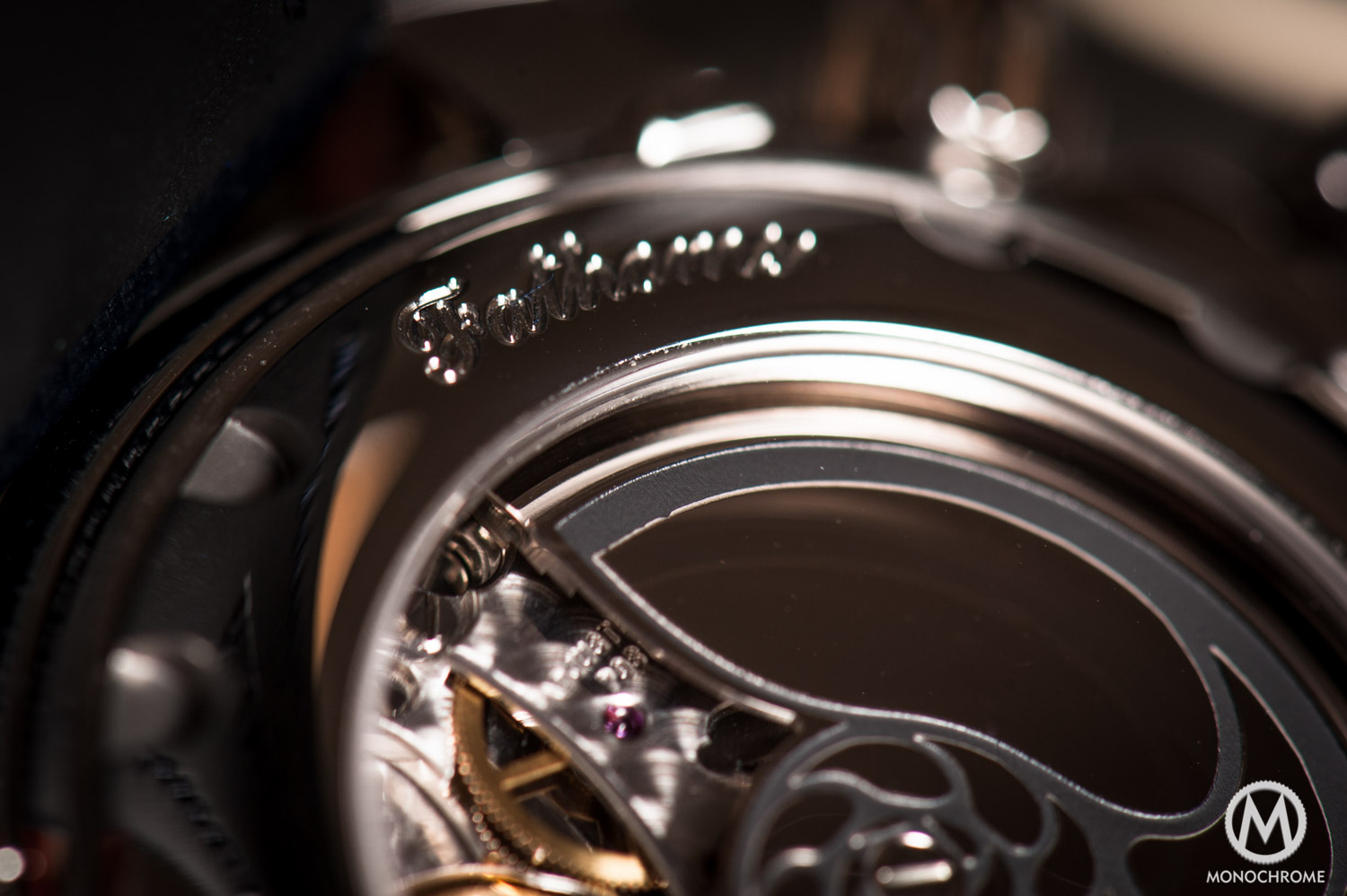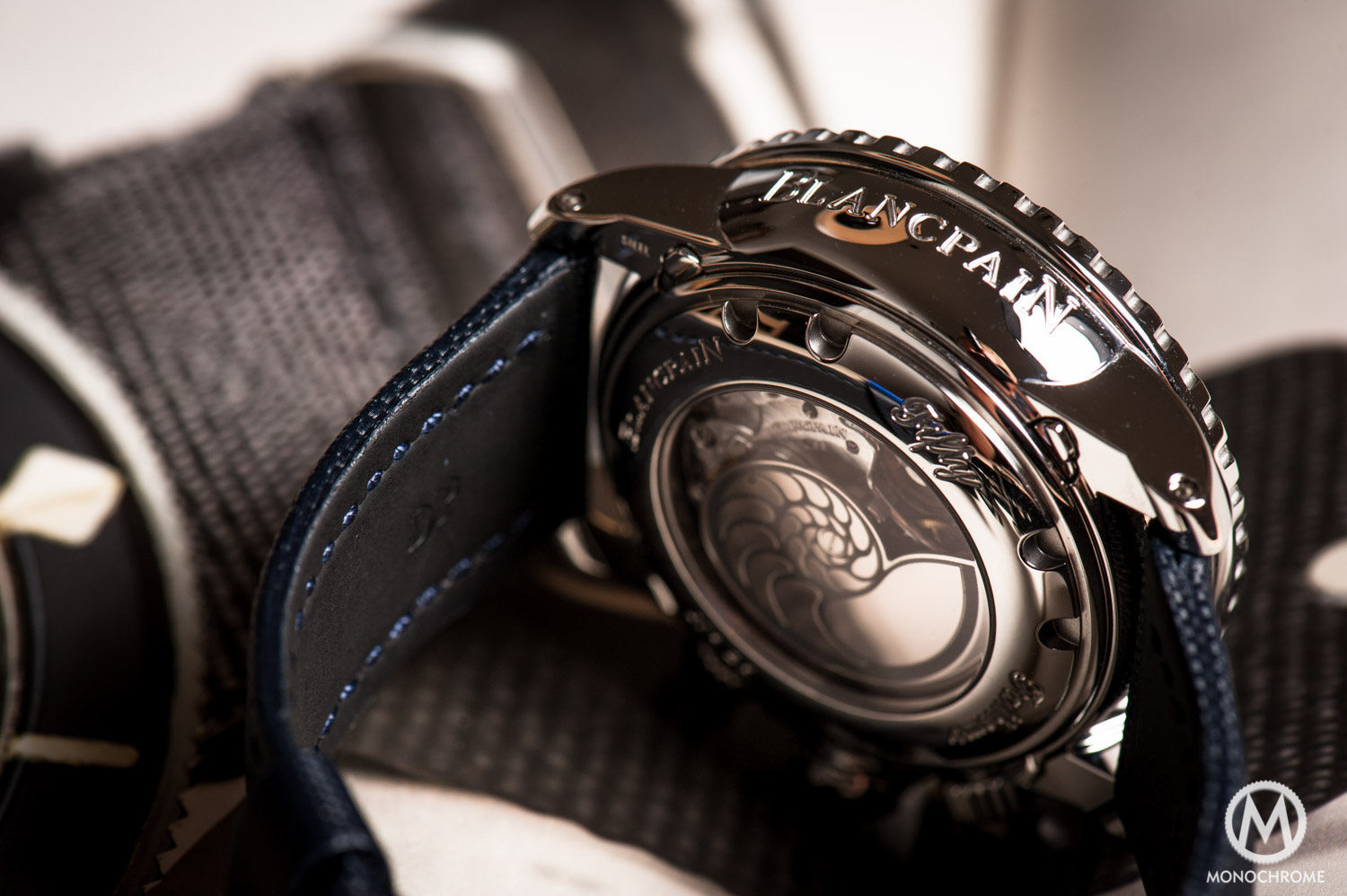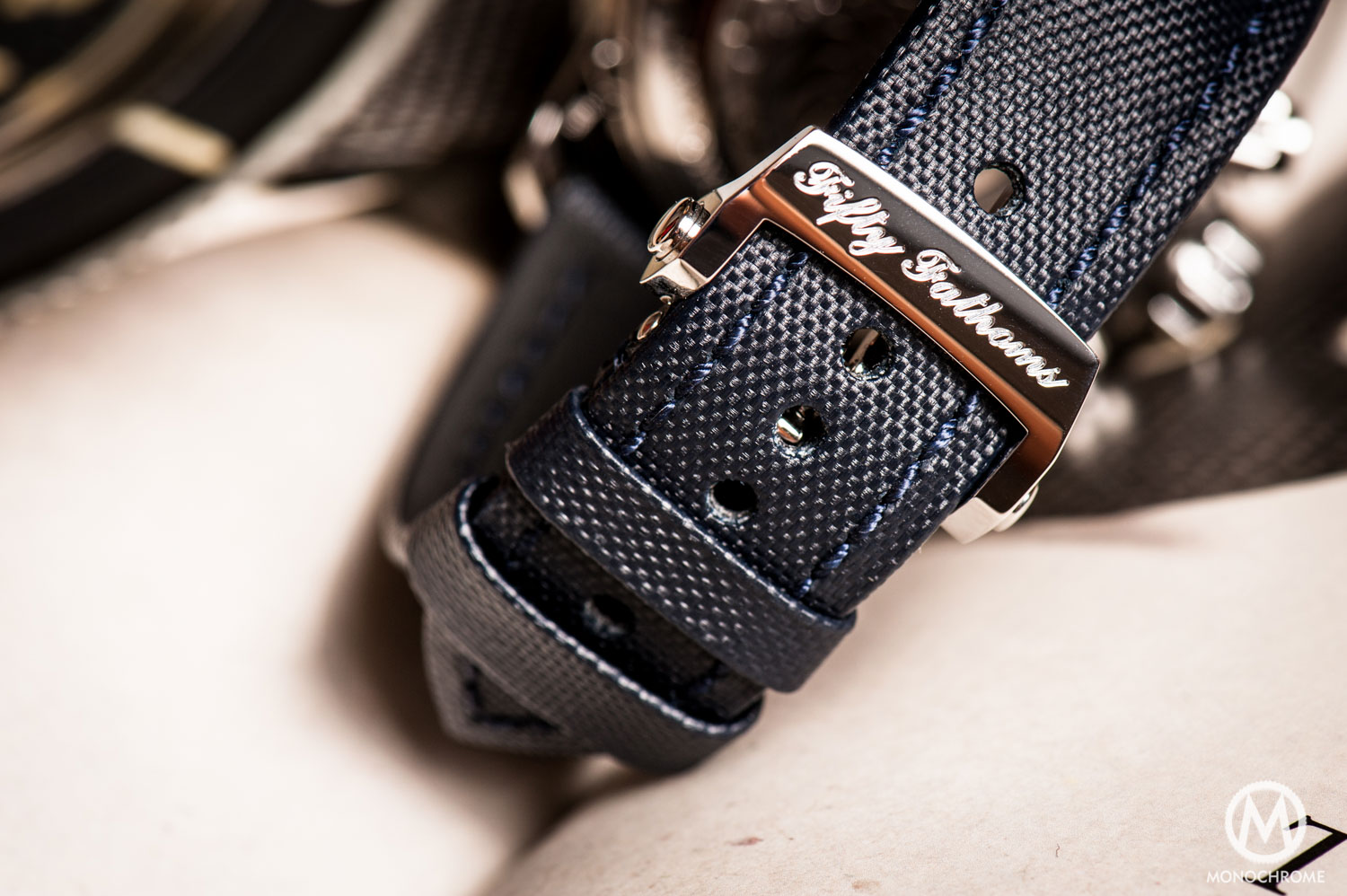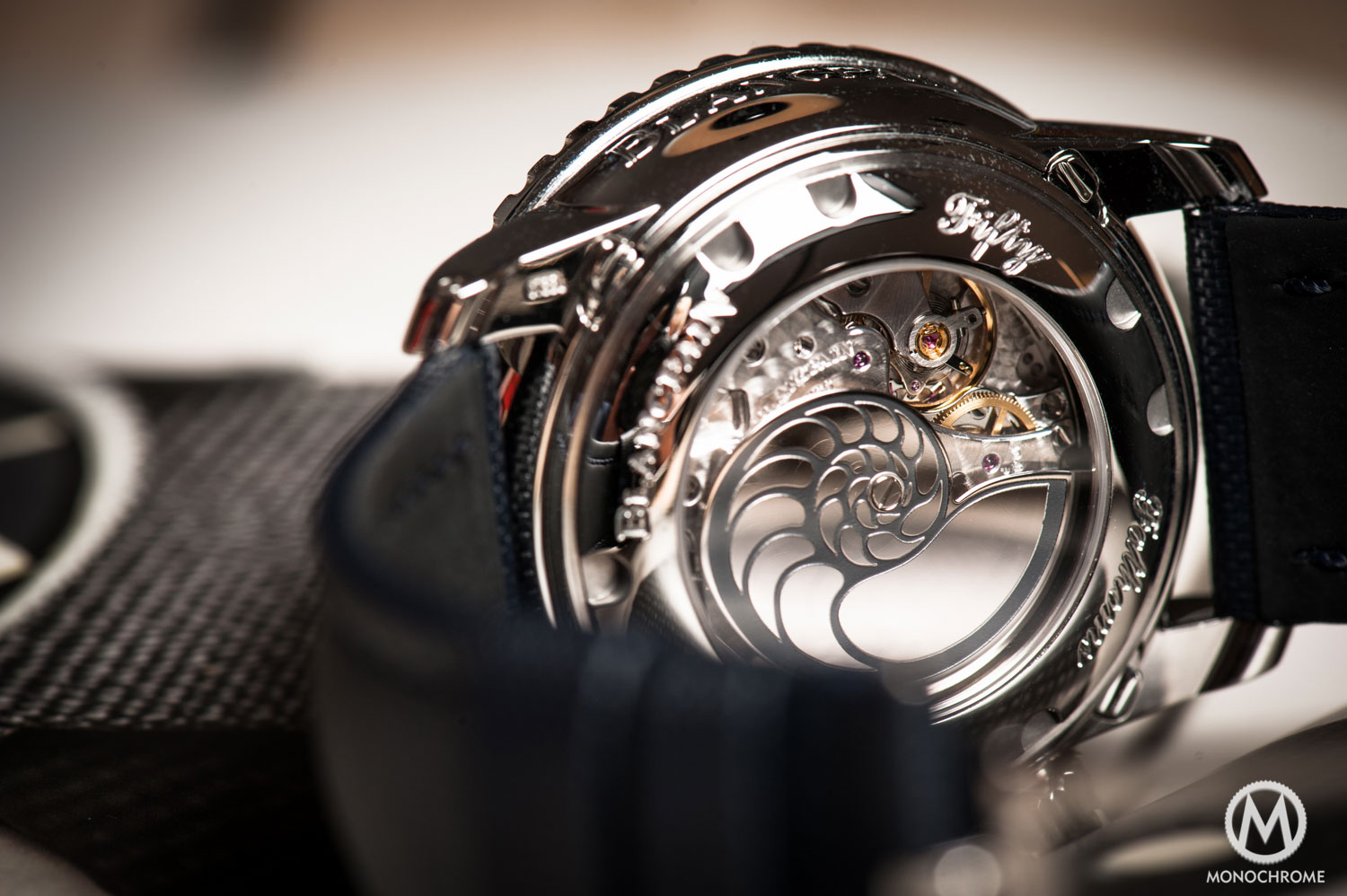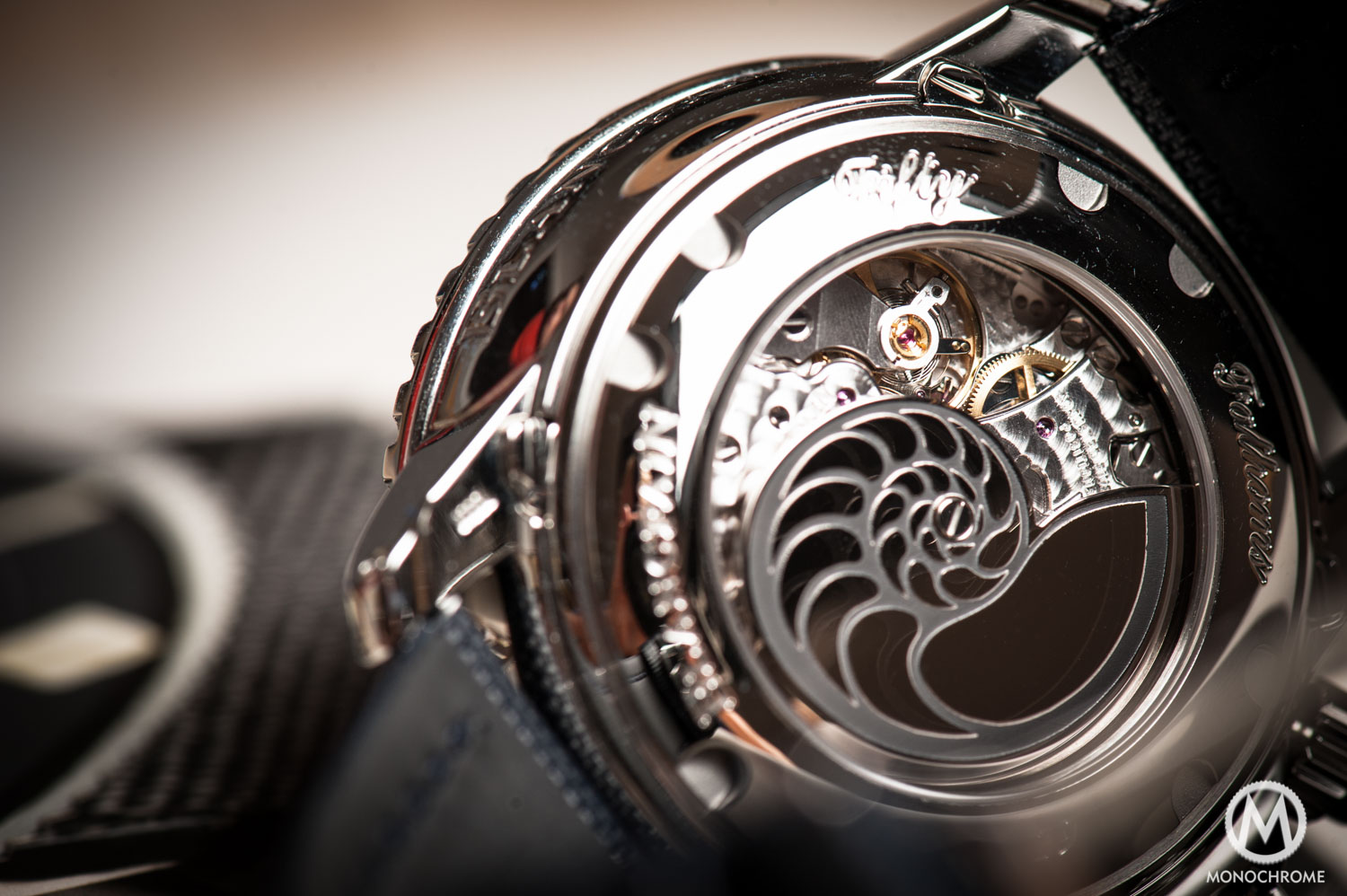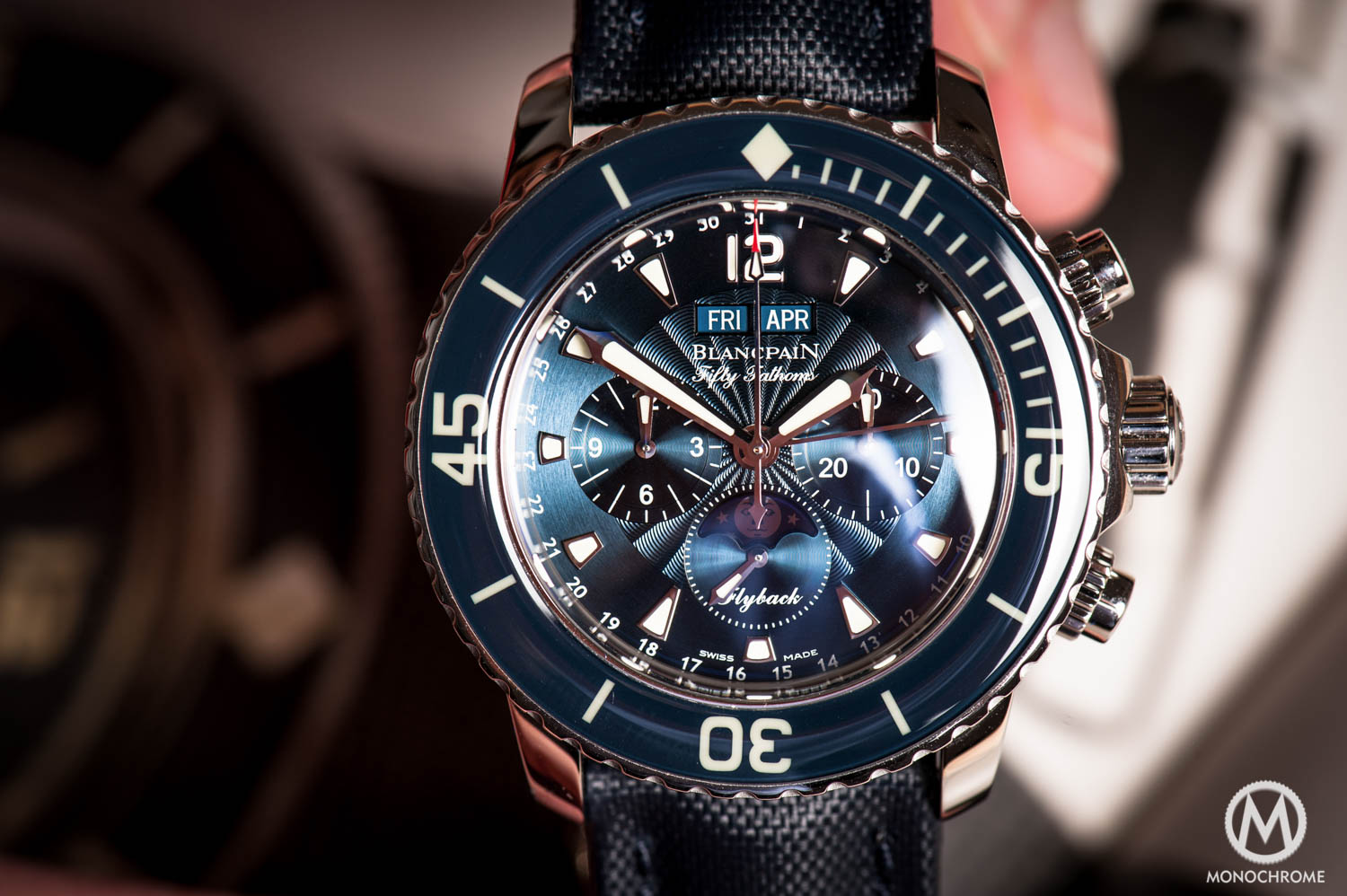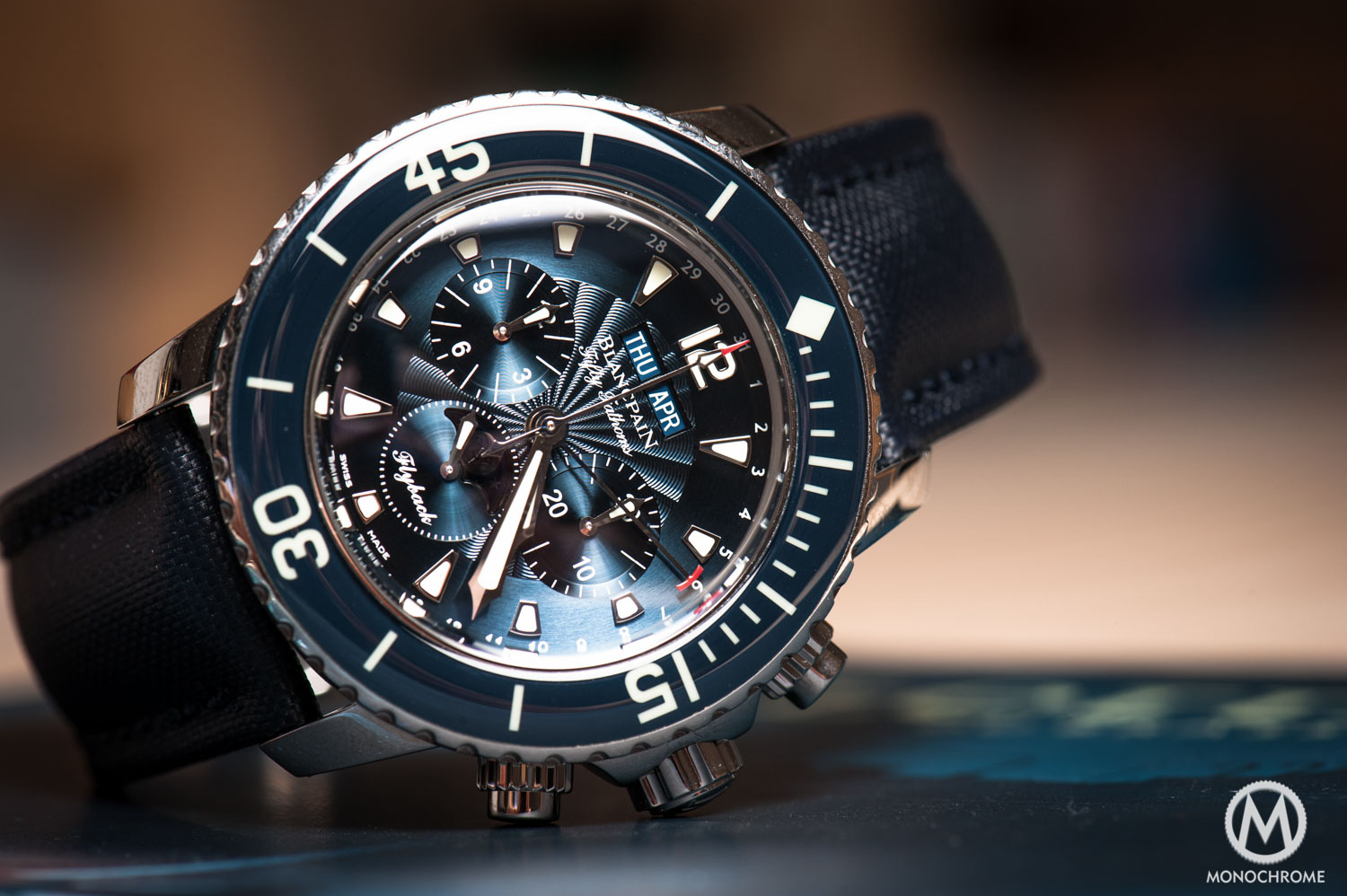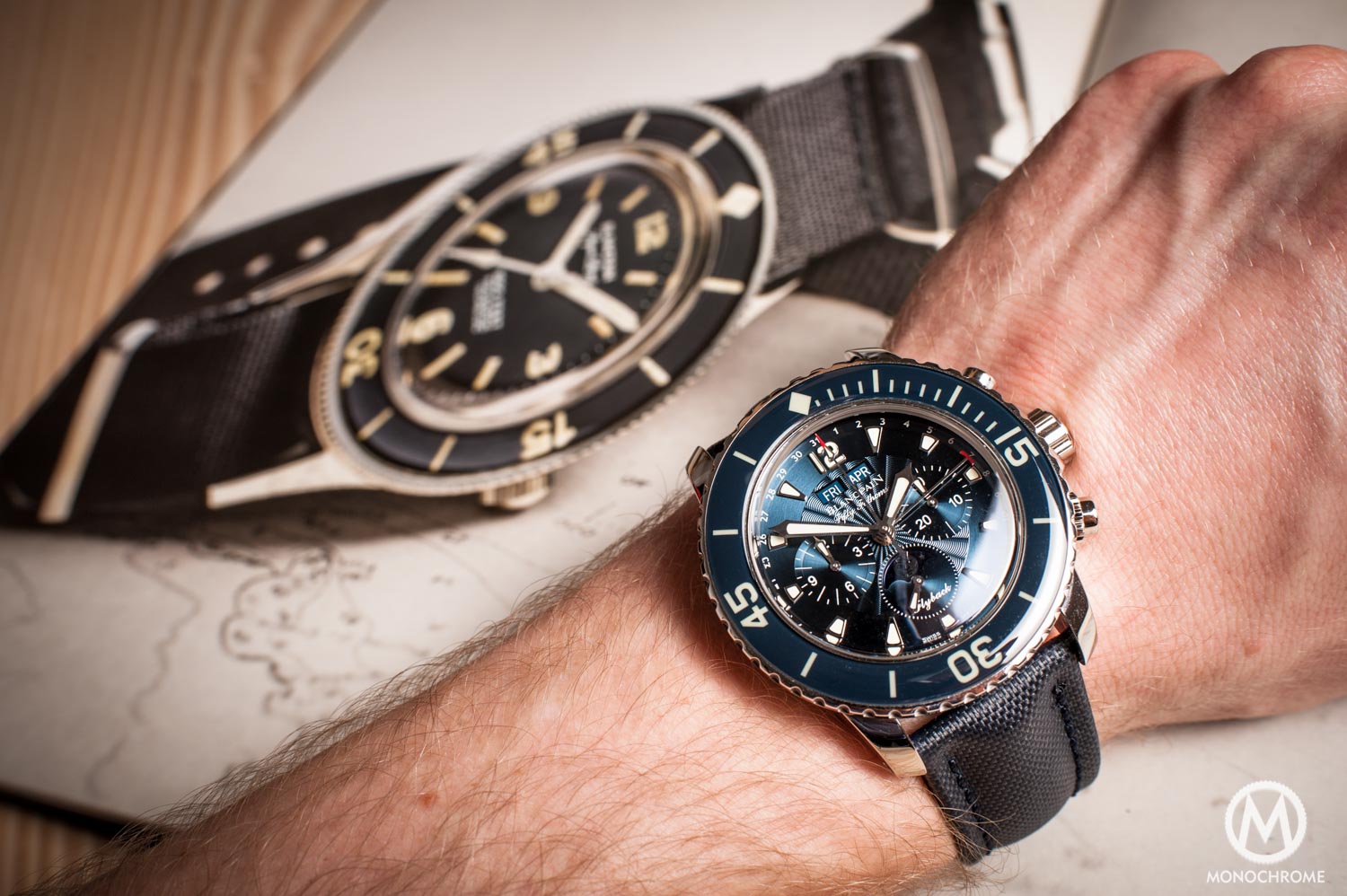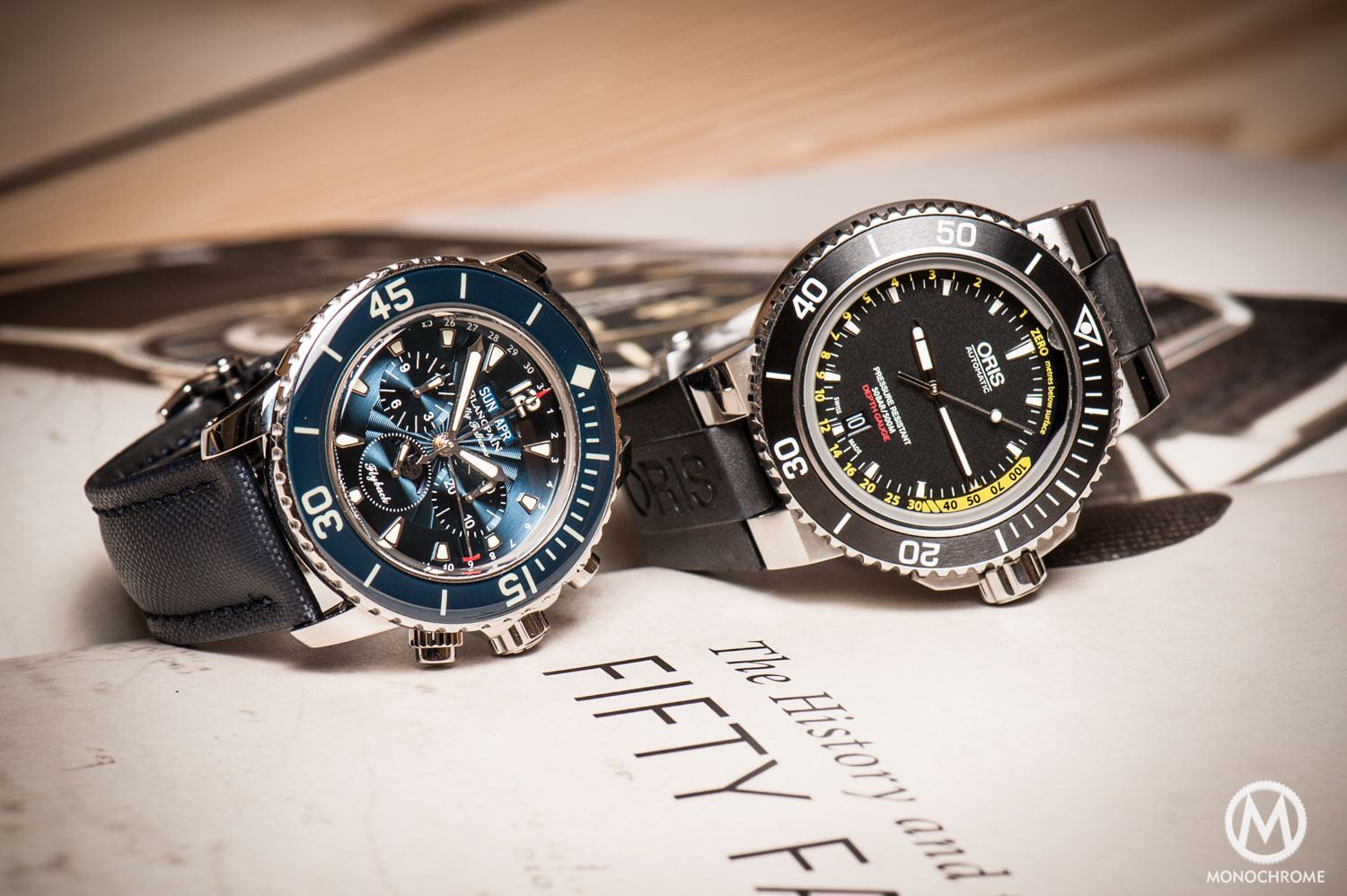The Collector’s Series – Diving deep with Mark’s Blancpain Fifty Fathoms Chronographe Flyback Quantieme Complet
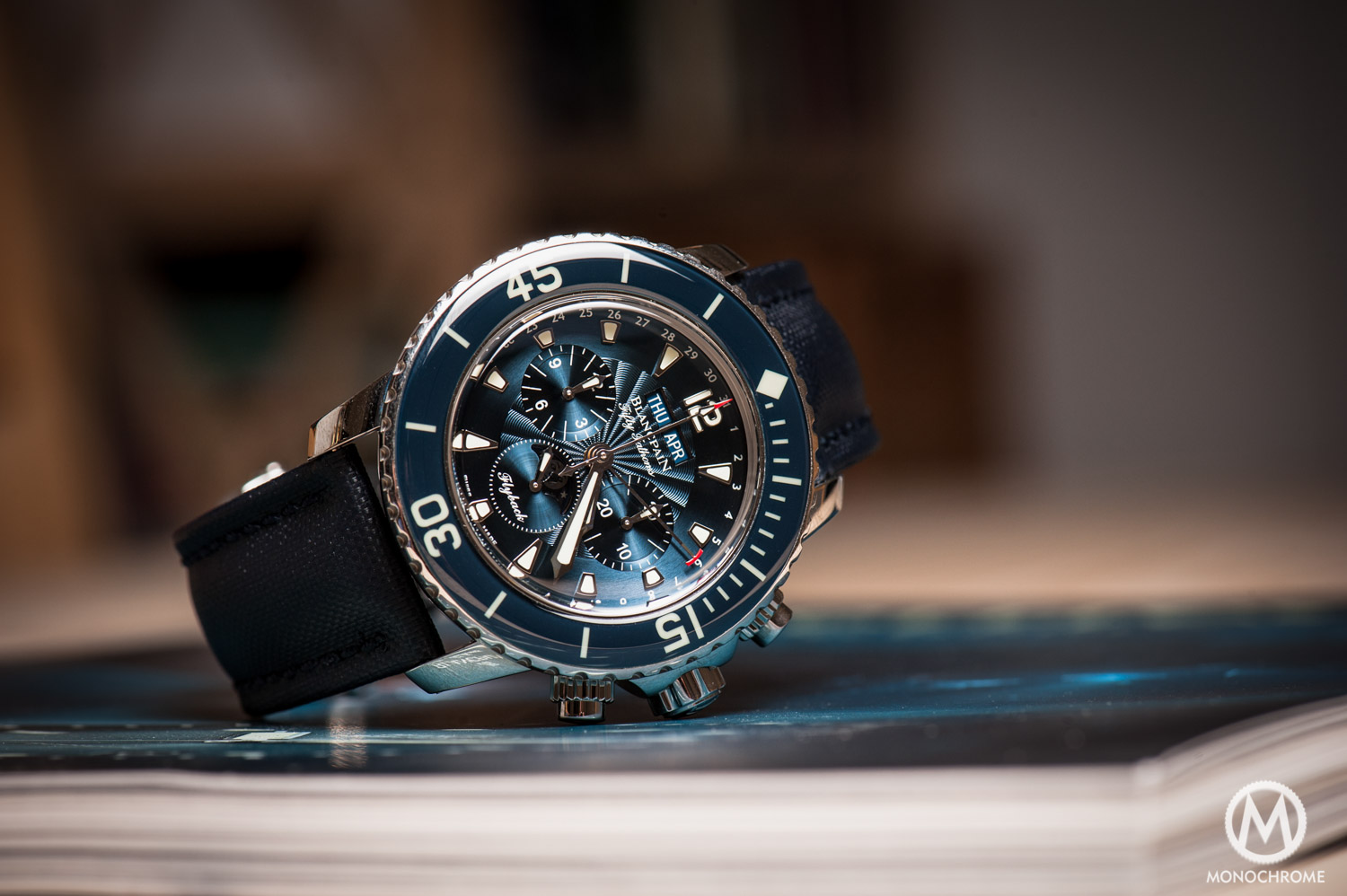
When you think ‘iconic dive watches’, what comes to mind?… Rolex Submariner? Rolex Sea-Dweller? Omega Seamaster? Panerai Radiomir?… Well, the good news is you would be absolutely correct. However, you would have overlooked one heavy hitter of the watch world: the Blancpain Fifty Fathoms, a watch seen by many hard-core divers as an essential tool in their armoury and by many collectors as their pride and joy. It is not just a functional watch, but a historically important one. And today we’re happy to show you a very nice example, together with Mark and his Blancpain Fifty Fathoms Chronographe Flyback Quantième Complet.
It was back in 1953 the first commercial Fifty Fathoms was released. The watch was developed by Jacques Fiechter, Blancpain CEO at the time and an early scuba diving fan. It was later refined for French combat divers with the addition of magnetic shielding. The story begins when Captain Robert “Bob” Maloubier and Lieutenant Claude Riffaud, both commanders at the French Combat Diving School, were in the market for a watch that could withstand the rigors of their elite diving force. The Fifty Fathoms was that watch. Although it has evolved considerably, both aesthetically and technically, since it’s inception. The reason it is still seen as a grail watch for many, is that it has managed to maintain that DNA that was so vital for divers in the 50’s to ensure their safety and execution in action. I never tire of hearing the stories behind why watches mean so much to individuals and this week on the Collector Series we discuss the glorious Fifty Fathoms Chronographe Flyback Quantième Complet with enigmatic collector Mark Sinclair. This is not the first time Mark has featured on the Series, as we covered his stunning Patek Philippe 5960P here.
Mark, Blancpain, as a manufacturer, has an illustrious heritage; can you tell us a little more about that and how much of a role this played in your decision to buy a Fifty Fathoms Chronographe Flyback Quantième Complet?
Jehan-Jacques Blancpain established Blancpain in 1735 making it one of the oldest brands in watchmaking. It was – according to some sources – under the management of the Blancpain family for almost two centuries until the early 1930s, when Betty Fiechter and André Léal bought the business and continued it under the name Rayville Ltd., successors to Blancpain. Betty Fiechter remained director of Blancpain until 1950, when her nephew, Jean-Jacques Fiechter, joined her. Now this is where it starts to get interesting.
In 1953, Blancpain launched their Fifty Fathoms – the father of modern dive watches. One of the things I find interesting about the Fifty Fathoms in particular, is the process that took place in creating it.
Two French naval officers, Captain Robert “Bob” Maloubier and Lieutenant Claude Riffaud, were in need of a watch for their military diving missions, so they developed a list of specifications. There was just one problem: none of the watches available on the market at the time made their cut. Meanwhile in Switzerland, Jean-Jacques Fiechter – who happened to be the CEO of Blancpain (1950-1980) – was passionate about a certain sport, diving. The two officers came into contact with Fiechter and, according to some sources, there was little need to convince him about the project as he had that was available. I am intrigued because this crucial moment ignited a process which ultimately led to the conception of what would become the Fifty Fathoms.
Maloubier and Riffaud needed a watch that would fit their requirements, but Fiechter also had his own ideas based on his experience in the diving milieu. A fusion of ideas and actual requirements, one might say. First and foremost, the watch had to be water resistant, so Fiechter developed a double sealed crown. It was a stroke of genius as it would protect the watch from water intrusion if the crown accidentally got pulled out during a dive, as the second inner seal would protect the watch.
Another key invention included a bezel which featured a special locking mechanism. Fiecther’s original locking mechanism required the wearer to push the bezel in order to rotate it, reminiscent of the system used by IWC in their Aquatimer (ref. 3536). Not only did this prevent inadvertent rotation of the bezel, but it also prevented sand and salt from interfering with its operation. Fiechter patented these inventions. Other vital elements in Fiechter’s design included a self-winding movement and antimagnetic properties. The former was important in order to reduce wear on the crown and its seals, which would occur with manual winding, while the latter was important to protect the movement from magnetism.
Combining these ideas and innovations with those of Maloubier and Riffaud, Fiechter was able to present a diving watch that would fit the needs of the French combat diving corps. We are talking about a purpose built watch based on ideas and requirements of people on different paths of their lives. This is fascinating, at least in my opinion.
The Fifty Fathoms, however, was not only the preferred choice of some special forces, it was also worn by Jacques-Yves Cousteau and Louis Malle during the shooting of “The Silent World” – both a Hollywood Oscar winner and winner of the Palme d’Or at the Cannes Festival in 1956. Blancpain went on to create a myriad of different models under the stewardship of Fiechter, but things soon turned bad for the watchmaking industry.
Blancpain – like many other companies in the industry – was affected by the quartz crisis in the 1970s which led Blancpain to become dormant for a while. But like Charles Perrault’s “Sleeping Beauty”, things turned out for the better. In the early 1980s, Jacques Piguet, who happens to be the son of Frédéric Piguet, bought the Blancpain brand together with Jean-Claude Biver for 22,000 CHF when Omega, who at the time owned the Blancpain brand, needed capital in order to finance their restructuring.
Jean-Claude Biver started to “re-create” Blancpain and soon came up with a watch featuring a moon phase and complete calendar, while most Swiss companies were developing quartz movements. It is admirable when people swim against the current and defy the odds. They were, however, just warming up and went on to introduce a self-winding perpetual calendar in 1985, and at the end of 1988, Blancpain was able to present all of the six masterpieces: ultra-thin, tourbillon, minute repeater, split seconds chronograph, perpetual calendar and moon phase. All of which were featured in the same round case, measuring 33 mm in diameter, cf. the interview of J.C. Biver here, on Hodinkee’s Talking Watches.
The Fifty Fathoms, however, was first ‘“truly” reborn under the stewardship of Marc A. Hayek in 2003, when a limited series of Fifty Fathoms was launched to commemorate its 50th anniversary. The series itself consisted of 50 watches, each in three different versions. But it was not until 2007 that the Fifty Fathoms collection became fully re-established. I find this history of “struggle” and “success” fascinating, as I can relate to it on a personal level. One could say I am drawn to the history both on an objective and a subjective level.
Oh, it should be pointed out that Biver and Piguet cashed in a whopping return of 60 million CHF, when they sold the brand to SSIH (today known as Swatch Group) in 1992. The history of both Blancpain and Fifty Fathoms played a significant role in my decision to buy this watch.
When and where did you come to own the watch?
I bought it back in 2013, which coincidentally was the 60th anniversary of Blancpain’s Fifty Fathoms. The Blancpain Fifty Fathoms Chronographe Flyback Quantieme Complet (ref. 5066F-1140-52B) was, however, launched in 2010 along with the Tribute to Fifty Fathoms (ref. 5015B-1130-52), among others.
It was sold by an authorized dealer in Scandinavia, and it had a suggested retail price of approx. 20,000 Euros in 2013, which was “fair” compared to the other alternatives available at that time. The price, however, has increased over the years, and it is currently priced at approx. 24,000 Euros.
Had you been considering other diving watches?
Many collectors and enthusiasts within our hobby keep a bucket list, and the Fifty Fathoms has been a favourite of mine for a long time, which is why I was determined to acquire a Fifty Fathoms. Of course, Rolex’s Submariner cannot be ignored in this instance, but if you already own a Submariner or have had the pleasure of using one, I would reckon a “standard” Fifty Fathoms (ref. 5015-1130-52) should rank high on one’s bucket list – even surpassing Audemars Piguet’s Royal Oak Offshore Diver, Omega’s Seamaster 300 and Girard Perregaux’s Seahawk – just to mention a few.
The Fifty Fathoms is a “must-have” on one’s bucket list, if you are interested in diving watches with a history. In my opinion, the currently available collection of “standard” Fifty Fathoms are capable of echoing the history of their roots, despite the changes of circumstances and technical upgrades.
For instance, if you look closely at the “standard” Fifty Fathoms, you will notice that it has retained some DNA from its iconic forefather: a white against black colour scheme, a triangle “’zero” marker on the rotating bezel, Arabic numerals (3, 6, 9 and 12) on the dial etc. It also has a domed sapphire crystal on the front and on the bezel, which adds a vintage feel. The movement (calibre 1315) currently used is, however, miles ahead compared to the one in the original Fifty Fathoms.
Blancpain was also – according to Jean-Claude Biver – never as prestigious as it is today. Despite of these changes and upgrades, the currently available Fifty Fathoms are still capable of echoing the history of their roots more or less depending on the model.
Was this a purchase for use as a tool watch?
No, I normally do not wear a watch when doing strenuous activities that might damage the watch. I do care about the condition of my watches, as a collector. One might consider it a shame, especially in this instance, because the original Fifty Fathoms served the special forces of different countries, including the US and the French, and specialists in the field of ocean exploration, but I do not feel comfortable wearing a watch during strenuous activities. It just does not feel right to wear a mechanical watch when bringing stuff to the recycling plant or fixing one’s allotment hut.
From the line up at Blancpain, why the Fifty Fathoms Chronographe Flyback Quantième Complet?
It is a good question, as it deviates from the traditional line of dive watches in the industry.
I honestly put a lot of thought into acquiring this watch. We are talking about a diving watch – fully capable of withstanding 300 metres of water – which features a significant number of complications consisting of a complete calendar, flyback chronograph and moon phases. However, there is more than meets the eye at first glance, but in order to appreciate the full experience, we will need to turn our attention to the back.
This watch features a revolutionary way of setting the calendar indications and moon phase by pushing one of the four patented under-lug correctors (introduced by Blancpain in 2004) which are dedicated for the date (corrector 3, located at 7 o’clock), day of the week (corrector 4, located at 11 o’clock), month and moon phases (correctors 1 and 2, located at 1 and 5 o’clock, respectively).
It eliminates the need of an adjusting tool because it can be done by using one’s fingertip, which becomes handy as you need to adjust the indications five times a year, if you intend to use it on a daily basis. One must remember that a complete calendar functions like a plain calendar, even though the extra indications might give another impression.
This solution is not only user-friendly, but it also makes the case aesthetically pleasing to look at, since there are no adjusters on the sides of the case – unlike most calendar watches, e.g. Langematik Perpetual (ref. 310.032), Equation du Temps Royal Oak (ref. 26603ST.OO.D002CR.01) and Patek’s Annual Calendar Chronograph (5905P-010). However, Blancpain did not just settle for this and went the extra mile: their design allows the user to “set” the calendar indications and moon phase at any given time of the day or night – again unlike most calendar watches on the market as this can damage the delicate components of the calendar complication. With this watch, if you accidentally push one or more of the correctors within a certain time frame, it simply does not affect the mechanics, and the indications do not change. How cool is that? This unique way of setting the calendar indications and moon phase is actually one of the main reasons behind this acquisition.
The watch is powered by Blancpain’s calibre 66BF8 and offers up to 40 hours of autonomy. Blancpain’s calibre 66BF8 is based on Frédéric Piguet’s calibre 1185, which is an integrated self-winding column wheel chronograph with a vertical clutch, and is in fact one of the thinnest self-winding chronographs in the world. It is regarded as a top-tier chronograph movement by collectors and enthusiasts around the globe, and it has been widely used in other watches, including: Vacheron Constantin’s Overseas (ref. 49150), Audemars Piguet’s Royal Oak (ref. 26300), Officine Panerai’s Luminor (ref. PAM 045 and 105), Breguet’s Marine Chronograph (ref. 3460), Cartier’s Pasha (ref. 2113), Alain Silberstein’s Bolido Krono (ref. BK 84) and many more.
The finish of the movement is fine, featuring circular graining on the main plate and chamfered bridges, Geneva striping on the automatic winding module and balance cock, polished screw-heads and an oscillating weight resembling a nautilus (crafted in 21 ct. gold, according to PR Specialist Aude Rosati from Blancpain).
Wait a minute, did I just use the word “module”? Yes, I did, because Piguet’s calibre 1185 is an automatic version of Piguet’s calibre 1180 which is manually wound. Wait a minute again, did I mention “Frédéric Piguet” a couple of times? Yes, I did, because in all fairness, the movement was created back in the days when Frédéric Piguet was a manufacturer of Swiss ébauche movements, which is why I refer to it as Frédéric Piguet. Frédéric Piguet SA has not existed for some years now because Swatch Group integrated them into Blancpain in 2010, thus making it Manufacture Blancpain, even though Swatch Group did in fact own Frédéric Piguet SA before the “transition”.
It should be pointed out that the chronograph is in fact operational at pressures of up to 300 metres of water (30 bars) and features a flyback mechanism (also known as “retour en vol”) which allows the user to stop the timing of the first interval and measure successive time intervals by only pressing one button. Blancpain happens to be the first brand to incorporate it in a ladies’ timepiece.
The moon phase complication is by some enthusiasts and collectors considered redundant, especially on diving watches. But this emotional or poetic complication (an affectionate term used by some enthusiasts and collectors) can become useful when diving, because the moon is at its brightest when full, thus offering better diving conditions. Furthermore, a recent study shows that sharks may dive deeper when the moon is full. The chances of meeting a diver or even a farmer wearing a high-end mechanical watch while out in the field is slim, but at least one cannot consider this complication as utterly useless. Aside from that it is also a signature complication for Blancpain, so it would be a shame not to own a watch that features so much DNA from the company.
I think it is fascinating that this watch offers all these features and successfully has undergone one or more water resistant tests – meeting the ISO 6425 norms. Blancpain, however, clearly points out in their manual that the Fifty Fathoms models are not professional diving instruments and must be backed up where necessary by professional instruments, e.g. diving computers. While talking about water resistance, it is interesting to know the actual story behind the name “Fifty Fathoms”. According to Blancpain (Lettres du Brassus, issue 13 [page 48-51]), Fiechter was inspired by Ariel, the spirit who reluctantly serves the magician Prospero in William Shakespeare’s “The Tempest”. Ariel sings: “Full fathom five thy father lies; Of his bones are coral made.” Fiechter, however, amended the number to “fifty” as “five fathoms” is not deep – just a mere 9.14 metres.
If we look at aspects apart from the technical ones, I adore the symmetry of the different indications on the flinqué dial and its mesmerizing shades of blue which vary depending on the lighting conditions – reminiscent of a 3D hologram card from the 1990s. According to Blancpain, the pattern of the dial is stamped onto it, while the blue colour is achieved by applying it with blue PVD. In my opinion, it blends perfectly together with the blue bezel insert and sailcloth strap. The latter is not abrasive against the skin due to the rubber inlay which also prevents sweat from passing through it. The luminous material on the dial and in the bezel – both of which is covered by a domed sapphire crystal – is bright. Operation of the one-directional bezel is fine, and in my opinion it has a distinct sound which tells it apart from some other diving watches on the market.
To wrap things up, it is a successful timepiece, despite it being a playful interpretation of a diving watch far apart from its forefathers. It is a hybrid between diving and high horology offering the properties of both worlds, and this combination is not often seen in one watch. This is a quality I find intriguing and charming at the same time.
That is also one of the reasons as to why I bought it, Justin.
The Fifty Fathoms Chronographe Flyback Quantième Complet is not an insignificant watch on the wrist. Did the size concern you at all?
I was fortunate enough to have a test drive with one of its siblings done in red gold (ref. 5015-3630-52), before making the final call. This test drive put my initial concerns to rest because it is not an insignificant watch, if you only focus on the specifications on paper.
The Fifty Fathoms is definitely a watch one must try on one’s wrist before making a final decision because it does not feel big at all, even though it has a diameter of 45.00 mm and is 17.40 mm thick. It is actually deceiving because it feels and looks smaller than a Panerai Luminor, e.g. PAM 524 (Luminor 1950 3 Days Chronograph Flyback), despite the latter having a smaller diameter.
Normally I tend to avoid watches larger than 44 mm in diameter, but I am prone to make an exception, if we are talking about a truly special piece, and this is the case with the Fifty Fathoms.
How does its size fit into your lifestyle?
It does not fit into my lifestyle, as I am mostly sitting behind a desk doing legal activities of some sort. However, I do exercise regularly and play badminton occasionally, but I prefer not wearing a watch under those circumstances.
I know it sounds odd, but I get this sensation of being thrown off balance with the added weight on just one wrist, and I will not wear a second watch on my other wrist to counter this sensation. Maybe I should give one of those lightweight watches from Richard Mille a try?
What three words would you use to describe the Fifty Fathoms Chronographe Flyback Quantième Complet?
Sub-zero, cool and exuberant.
Is there anything you would change about the watch?
Initially, I was not too fond of the inscription on the left side of the case, but once you understand the nature of this horological Kraken, you will forget about it. The watch is a high-end mechanical diving watch, thus featuring elements from both worlds, so it does not seem out of place to embellish it with an inscription which blends so well with the flinqué dial.
Have you visited the Blancpain Manufacture?
No, unfortunately. However, I would not refuse an invitation, if it would fit into my schedule.
As an owner, what three pieces of advice would you give to someone looking to buy a diving watch?
First of all, I urge you to do your homework before acquiring any watch in general as it eliminates or at least minimizes the risk of making a decision that you will later regret. You do not need to own every diving watch ever made. Try to maintain a focus by creating a set of rules, if you want to start a collection of diving watches, e.g. diving watches from a certain period, diving watches with a history, diving watches with a depth gauge (see photo below) or something else.
Secondly, there is no need to buy a diving watch capable of withstanding enormous pressure which will kill a human being. It seems excessive as Aquaman and other comic book characters are a work of fiction. Yes, Patrick Musimu did shatter the previous “No Limits” world record in free diving by diving to 209 metres in 2005, but he – and other practitioners within the field – are/were professionals. This is not the case with the majority of watch enthusiasts on Internet forums, some of which disqualify diving watches solely based on their water resistance being less than 500 metres – even though most diving watches go through their existence as desk divers.
Thirdly, remember to have the gasket(s) checked once in a while, as water and other liquids can cause devastating effects on the movement in particular. It is classic advice, but every now and then consumers, and even watch enthusiasts, forget this important rule of thumb.
Is the Fifty Fathoms Chronographe Flyback Quantième Complet a keeper?
Yes, without a doubt.
It is a marvellous timepiece featuring a complicated movement consisting of 448 parts housed in iconic design which can be used for diving, if one ever feels the need for it. How cool is that?
My admiration for the Fifty Fathoms has not faded after acquiring it, but I will admit that I am not likely to acquire another one as of now, even though the Fifty Fathoms Tourbillon 8 Jours (ref. 5025-1530-52A) – featuring a flying tourbillon by Vincent Calabrese – is another fascinating hybrid between high horology and diving.
A special thank you to Mark for hiring a professional photographer, J. F. Sørensen, in order to bring you these superb photos.

